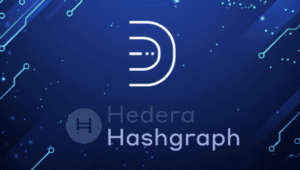The Uncensored Crypto podcast delivers straight-talk about Bitcoin and other cryptocurrencies, Web3, the blockchain, DeFi, NFTs, and more. Host Michael Hearne interviews the disruptors at the forefront of the crypto revolution shaping our economic, financial, and political future.
In the eighth episode of the Uncensored Crypto podcast, our CEO, Michael Hearne, sits down with Mance Harmon, the CEO and co-founder of Hedera Hashgraph. He’s a serial tech entrepreneur who has built up and sold various companies and had a lot to say about consensus, decentralization, and more.
Many crypto entrepreneurs are interested in starting a blockchain startup that can make an impact – but Harmon is thinking differently. In fact, Hedera Hashgraph seeks to be an alternative to blockchain technology. Let’s learn more about Harmon and how he got here.
His path to entrepreneurship

Many people start their entrepreneurial journey early on, even starting companies while still a teenager. Mance Harmon and his path to Hedera Hashgraph begins in a different place – the military. Harmon knew his family couldn’t afford college and knew that joining the military would offer him an opportunity to get an education.
Harmon was a research scientist for the Air Force before becoming a program manager for the Missile Defense Agency. During his time in the Air Force, his research remained focused on machine learning technology. At the Missile Defense Agency, he met his co-founder, Leemon Baird.
Interestingly enough, his first startup was focused on figuring out how to decentralize the database. The company was eventually sold to Motorola in 2004, and that early emphasis on decentralization certainly helped shape Harmon’s future path towards Hedera Hashgraph.
The birth of Hedera Hashgraph

Harmon isn’t afraid to express his opinion that Bitcoin, as it stands, is slow. Baird knew that transaction speed would be a problem, which is why he was so focused on developing a consensus algorithm that was not only faster but more secure. The company claims that Hashgraph can handle 10,000 transactions per second, while Bitcoin can only handle up to 7 transactions per second.
How did all of this happen? Leemon Baird was working on creating a distributed consensus algorithm back in 2012, when many people weren’t even aware of Bitcoin. Years later, he had solved the problem by inventing the Hashgraph algorithm, but the entire cryptocurrency landscape had changed. Hashgraph is the foundation of Hedera Hashgraph as a company.
Both Mance Harmon and Leemon Baird were completely unknown in the industry in 2015, even though they had an incredible new algorithm. They decided to create a company, build the software, and “prove out” the technology. Hedera Hashgraph also boasts its own cryptocurrency, the HBAR token.
The company was called Swirlds, and it is known for using Hashgraph technology to address the credit union sector. They collaborated with credit unions interested in distributed ledger technology at the time. Once they created Swirlds, they decided it was time to go build a public network – and Hedera Hashgraph was born. Since Hedera granted access to its mainnet beta, it has logged over 1.6 billion transactions.
Hedera Hashgraph does build enterprise-level solutions for corporations, but Mance Harmon points out that these solutions often take longer to build and go to market. He notes: “Most of our use cases have been utilized by startups and small businesses.”
The future will be tokenized

Later in the Uncensored Crypto podcast, Michael Hearne asks Harmon about what he thinks regarding the future. If there’s one thing Mance Harmon is sure about, he believes we will soon live in a very tokenized world. He believes that Hedera is uniquely positioned to grow because of this, stating: “Hedera makes it possible for developers to issue tokens of any type, and manage them using our network.”
Mance Harmon isn’t joking about what he thinks the future will look like. In this quote from the Uncensored Crypto podcast episode 8, he states: “Everything you see and touch…all products and services are going to be tokenized. They’re going to have a digital twin. We’re going to live in a tokenized world.”
Ultimately, Harmon thinks that we need to think more about energy. He’s proud of the fact that Hedera is one of the “greenest” protocols, but he believes that the company has a more significant part to play. Specifically, he believes that Hedera will have a role in enabling and supporting marketplaces for carbon credits and renewable energy credits.
About the Author

Michael Hearne
About Decentral Publishing
Decentral Publishing is dedicated to producing content through our blog, eBooks, and docu-series to help our readers deepen their knowledge of cryptocurrency and related topics. Do you have a fresh perspective or any other topics worth discussing? Keep the conversation going with us online at: Facebook, Twitter, Instagram, and LinkedIn.


